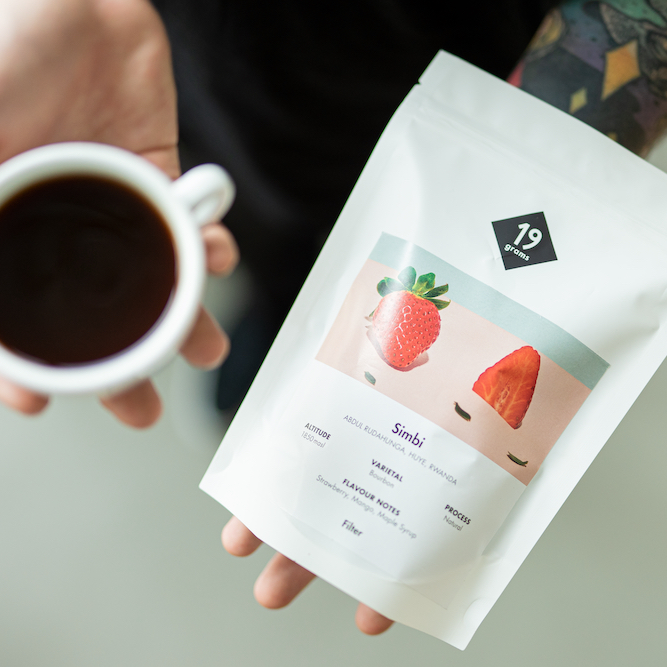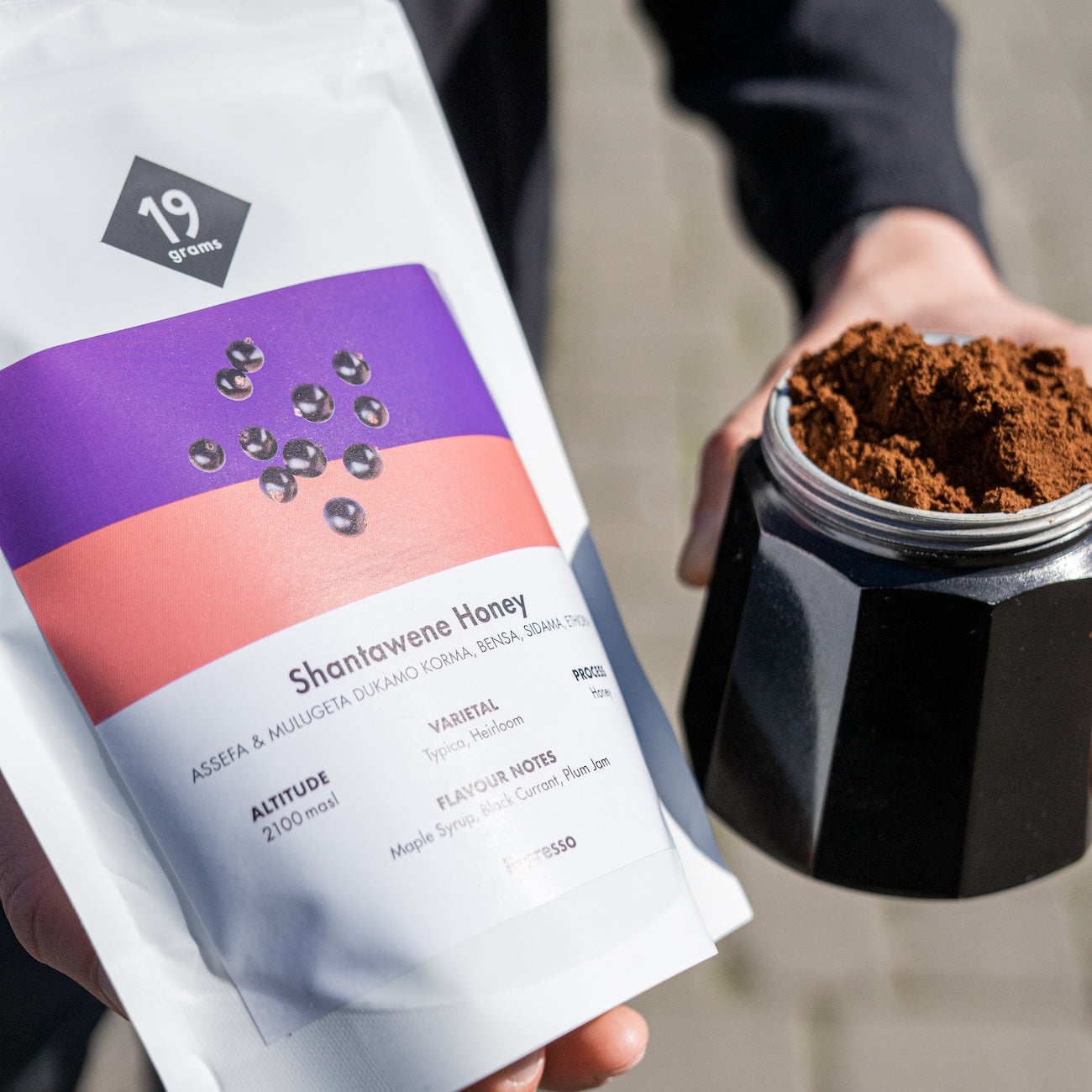We’re used to seeing washed, natural and honey under “process” on our coffee bags. Now, you may spot sophisticated terms like carbonic maceration and anaerobic fermentation and be wondering what they mean.
Some coffee producers are getting more experimental with their processing techniques, taking inspiration from vintners and playing with fermentation. As lovers of tasty drinks, we were curious to see where winemaking and coffee production share similarities, and what the coffee industry has learned from winemaking…
Growing
Both coffee and wine require specific growing conditions. Coffee likes the toastier environments near the equator, spanning from the Tropic of Cancer (23 degrees north) and the Tropic of Capricorn (23 degrees south), also known as “The Bean Belt.” This belt is the only environment suitable for growing coffee, whereas grapevines are a little less demanding and will grow in pretty much any warm, sunny condition, so long as they have deep, well drained soil.
Harvesting
Harvesting grapes and coffee cherries is a yearly occurrence, with some varieties very occasionally yielding a double harvest. Typically, a harvest lasts for a couple of months, but this will differ depending on the variety and country of origin.
Specialty coffee producers practise selective picking, wherein the cherries are hand-picked to ensure optimal ripeness. Usually, the pickers begin their work in the early hours of the morning, carrying heavy bags up and down the slopes with little concern for careful handling of the cherries. Meanwhile, grapes must be picked under circumstances which prevent early fermentation. They are usually picked at night and stored in large bins, which reduces the chance of juice expulsion and avoids the heat of the sun.
Processing
This is where it gets more elaborate. After the harvest, coffee cherries are processed to prepare the green beans for roasting, and grapes begin their journey of crushing, pressing and fermentation.
Coffee processing is traditionally a simple, low-tech procedure, with three main processing methods: natural, washed and honey. While different processing methods determine how the coffee is roasted, once the green beans leave their farm, the fate of the flavour ultimately lies at the hands of the roaster. In contrast, fermentation is key to determining a wine’s final flavour profile.
Coffee processing
Nestled together at the centre of each coffee cherry are two seeds wrapped in a thin parchment (silverskin) and the hull, which is coated in a sweet substance called the mucilage. Next comes a layer of sugar and water known as the pulp, and everything is held together by the cherry’s tough outer skin. The aim of processing coffee is to procure these two little seeds and dry them out, ready for roasting. Here’s a brief overview on the three commonly practised processing methods:
Natural/dry process: Natural coffees are dried in the coffee cherry before being depulped. This allows the beans to interact with the naturally occurring sugars in the surrounding mucilage, resulting in fruity, funky flavours.
Washed/wet process: The coffees are depulped and the beans washed clean before drying. Washed coffees are highly regarded for their clarity and vibrancy, as the natural flavours of the bean are unencumbered by fermentation.
Pulp natural/honey process: Lying somewhere in the middle is the honey process. Cherries are depulped before drying, but not washed, leaving the beans to dry in a coat of sticky golden mucilage. This results in a coffee with more complexity than a washed, but without the intensity of a natural.
Grapes
Contrary to coffee, grapes are crushed and pressed to get the skin and pulp: the last element of a grape we want is the seed. The seed is a concentrated hub of tannins, which when not dealt with carefully leads to bitterness and too much astringency (tastes associated with a dry, dusty mouthfeel). The grapes are crushed to break down the berry, then pressed to squeeze the liquid from the solid parts.
Maceration
Maceration occurs when grape seeds and skins are in contact with the must (juice). The goal of maceration is to draw the colour, aromas and tannins from the skin and seeds, before the juice is pressed. This is what gives “skin-contact” wines (red, orange, rosé) their deep, complex flavour profiles and fuller bodies. Let’s take a look at the main maceration processes…
Extended maceration: The seeds and skins are left in contact with the must for a longer period of time, and maceration occurs while the must is fermenting. The resulting wines are richer, with less tannin and greater ageing ability.
Cold soak: Also known as pre-fermentation maceration, when maceration occurs in unfermented grape juice. This happens at a lower temperature to control extraction, then once the juice is pressed, the temperature of the must is increased to begin fermentation again.
Carbonic maceration: Fermentation occurs in any environment with sugars, microorganisms and a lack of oxygen. Whole clusters of grapes are placed in a carbon dioxide filled tank, creating an anaerobic (without oxygen) environment, encouraging the yeast to use the available sugars from the grape and ferment from the inside. This is a popular method as it results in fruitier wines with bold colours and aromas from the skin contact, but the softer tannins means we aren’t left with too much bitterness and astringency.
When making white wine, the grapes are usually crushed and pressed soon after harvesting, meaning maceration is either avoided or very limited. This results in the crisp, sweet, acidic qualities of a white wine you may enjoy at the peak of summer heat.
Two worlds collide
So, where do these two industries meet? We can thank Australian barista champion Sasa Sestic for introducing carbonic maceration to the world of specialty coffee, when he won The World Barista Championship with a washed carbonic macerated coffee. Sasa advocates the importance of fermentation in coffee processing, claiming that inconsistencies in traditional methods can significantly decrease the overall quality of a coffee (as determined by the SCA cupping score).
As previously mentioned, fermentation occurs in any anaerobic environment where sugars and microorganisms are present. This is happening anyway as the beans are drying with or without their skin, so it only makes sense to pay it more heed. The aim of processing a coffee cherry is to get to its seeds, to access the green beans which are sent to a roaster for them to work their magic. However, with a little attention given to fermentation, some coffee producers are choosing to have more of a hand in the final flavour of their beans.
Carbonic maceration
This term is taken directly from wine making, and in the same way clusters of grapes are placed in a sealed tank, the whole coffee cherry is also fermented in an anaerobic environment. The coffee ferments in its skin, from the inside of the cherry, and results in intensely fruity, boozy coffees with high levels of acidity.
Anaerobic fermentation
With anaerobic fermentation, the coffee is pulp and placed in a sealed tank, therefore no oxygen is present and the sugar from the mucilage ferments. This method tends to result in a creamier body with prominent fruit flavours, and less bitterness. You’ll hear people describe it as “funky.”
Don Martin, a long standing direct trade partner of ours in Costa Rica has his own special 777 Double Anaerobic fermentation method whereby he monitors the sugar percentage during fermentation. This helps him to achieve the optimal sweetness in his beans, making his beans a pleasure to roast with.
What can the coffee industry learn from winemaking?
We’re beginning to see that by applying tried and tested winemaking techniques to coffee production, producers can increase the quality of their coffee and have more sway in its final flavour. If you aren’t convinced yet, a lot of our current coffees come from farmers who have very successfully experimented with fermentation.
It is worth noting that we determine “a higher quality” coffee by the SCA cupping score. Although this is a very holistic and widely encompassing judging procedure, it is one standard against which to measure the quality of a coffee. At the end of the day, taste is subjective, and while it’s super exciting to see more experimentation in coffee production, and to see it benefiting some producers, we still love that coffee in its simplest form abiding by its traditional methods is spectacular, and will continue to have a place in our roastery.






